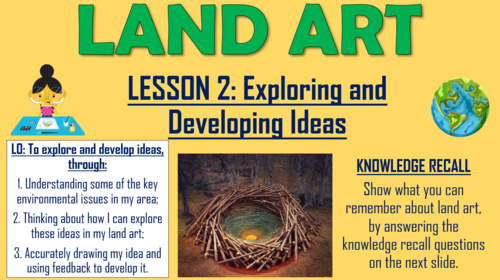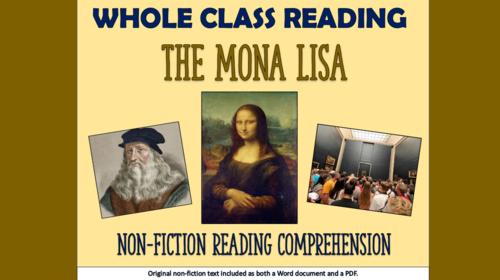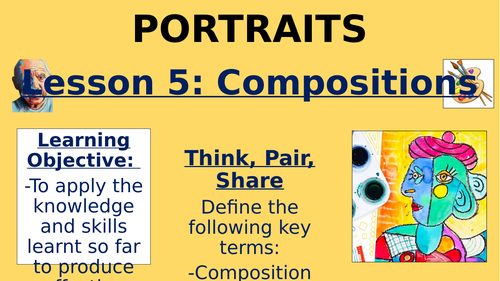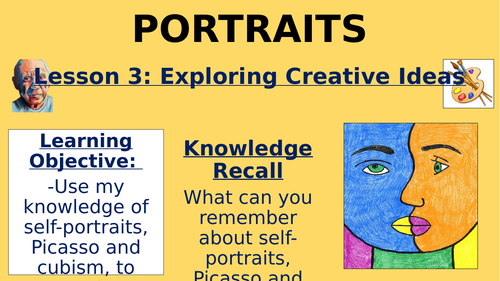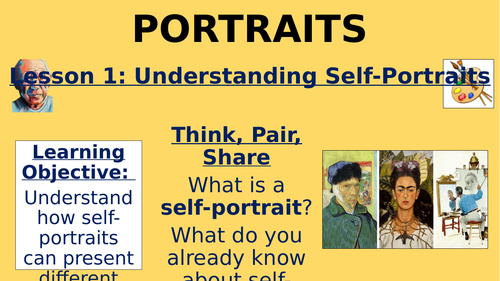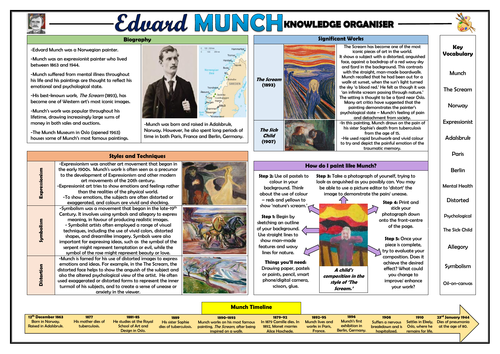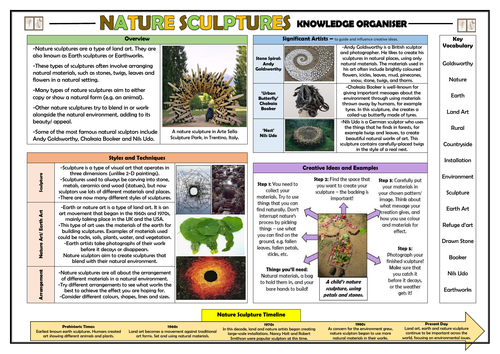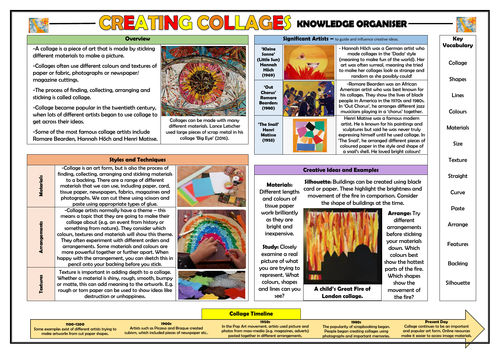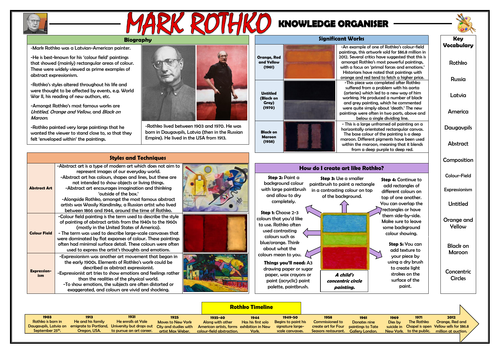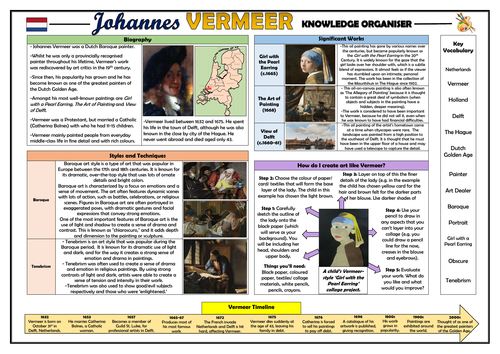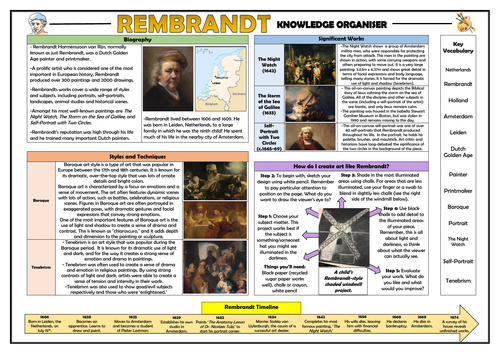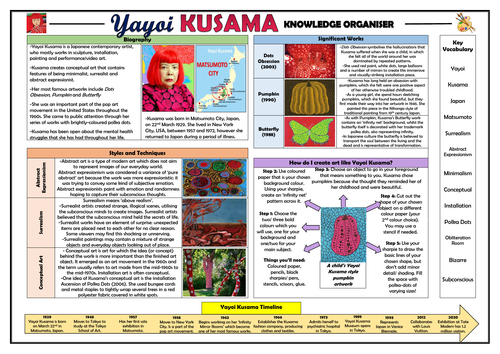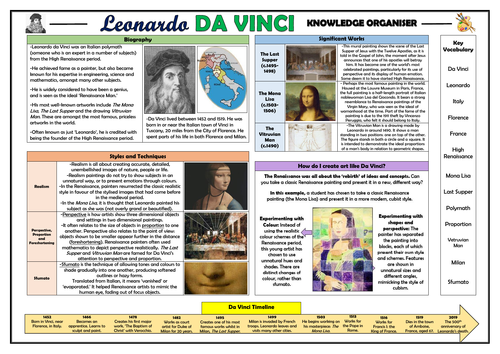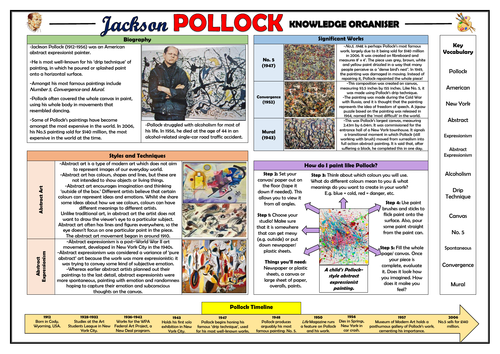
3k+Uploads
1896k+Views
2230k+Downloads
Art and design

Land Art/ Earth Art Project - Lesson 3 - Creating!
This engaging and purposeful series of lessons enables children to gradually develop towards creating their own land art/ Earth sculptures. The resources were originally created to guide children towards creating art in the school grounds and a local forest, but the resources can easily be adapted to fit your own particular local landscapes.
This third lesson helps children to:
-Revisit what land art is and understand its key features;
-Understand the key skills needed to create land art;
-Apply these skills to their own land art;
-Use llight and filters to capture their land art effectively.
The lesson follows an eye-catching and comprehensive 16-slide PowerPoint presentation. Children are taught the key creating skills that they will need to use in assembling their art piece. They are also taught about the basic photography/ edit features that they can use to enhance their artwork (the icons that they are taught are aligned with those that would be found on ipads and most other tablet/ digital camera devices).
These lessons were originally created for children in year 2, but may be adapted for slightly older and younger year groups.

Land Art/ Earth Art Project - Lesson 2 - Exploring and Developing Ideas!
This engaging and purposeful series of lessons enables children to gradually develop towards creating their own land art/ Earth sculptures. The resources were originally created to guide children towards creating art in the school grounds and a local forest, but the resources can easily be adapted to fit your own particular local landscapes.
This second lesson helps children to:
-Revisit what land art is and understand its key features;
-Learn about some of the environmental issues that are important to land artists;
-Explore their own creative ideas, considering subject matter, materials, methods and their key messages;
-Responding to feedback and further developing their creative ideas.
The lesson follows an eye-catching and comprehensive 19-slide PowerPoint presentation.
These lessons were originally created for children in year 2, but may be adapted for slightly older and younger year groups.

Land Art/ Earth Art Project - Lesson 1 - Researching!
This engaging and purposeful series of lessons enables children to gradually develop towards creating their own land art/ Earth sculptures. The resources were originally created to guide children towards creating art in the school grounds and a local forest, but the resources can easily be adapted to fit your own particular local landscapes.
This first lesson helps children to:
-Understand what land art is and identify its key features;
-Explore the materials and methods used by land artists;
-Share personal responses about the artworks that they observe;
-Begin exploring materials in their local area.
Included is an eye-catching and comprehensive 19-slide PowerPoint presentation, and hard copies of the artworks to explore (in both Word and PDF).
These lessons were originally created for children in year 2, but may be adapted for slightly older and younger year groups.
Bundle Sale

The Renaissance - KS2 Whole Class Reading Bundle!
These whole class reading session aims to develop children’s fluency and comprehension skills whilst reading engaging and informative texts related to ‘The Renaissance.’
Included in the bundle are three complete whole class reading resource packs, with everything that you need to teach the whole class reading lessons on:
-The Renaissance Period (non-fiction text);
-The Mona Lisa (original information text);
-Romeo and Juliet (Andrew Matthews/ Tony Ross adaptation).
All of the extracts/ readings that are needed for the lessons are provided (in both Word and PDF), as are the step-by-step Powerpoints containing all of the activities. These aim to develop children’s VIPERS skills: vocabulary, inference, prediction, explanation, retrieval, sequencing and summarising. Each lesson also contains a vocabulary check immediately after the extract is read to clarify any unfamiliar/ difficult language.
The tasks are comprised of quick-check questions, solo thinking, pair/ group discussions and deeper thinking activities.
The sessions are best suited for children across KS2 - they have been tried and tested with children in years 4 to 6. Hope that you find them useful!

The Mona Lisa - Whole Class Reading Comprehension Lesson!
This whole class reading session aims to develop children’s fluency and comprehension skills through reading all about the history and significance of the Mona Lisa. It contains an original 800 word non-fiction information text for the students to read and comprehend.
The reading is followed by a series of activities aiming to develop children’s VIPERS skills: vocabulary, inference, prediction, explanation, retrieval, sequencing and summarising. It also contains a vocabulary check immediately after the extract is read to clarify any unfamiliar/ difficult language.
The tasks are comprised of quick-check questions, solo thinking, pair/ group discussions and deeper thinking activities. The text to read is provided in both PDF and Word format.
The session is best suited for children in upper KS2, however it could easily be used with KS3 students and could feasibly be utilised with slightly younger children, depending upon the individual context of your class.
Bundle Sale

Picasso Cubism Self-Portraits - Complete Project Bundle!
These engaging and purposeful lessons guide children towards creating their own Pablo Picasso cubism-style self portraits.
Included is a complete series of six comprehensive lessons:
Lesson 1: Self-Portraits
-Define self-portraits and understand why they are important;
-Reflect on the key meanings behind some of the world’s most renowned self-portraits;
-Think about their own identity and consider how their features may be shown in self-portrait through colours, shapes and symbols.
Lesson 2: Picasso and Cubism
-Use effective research skills and a research template to find out key information about Pablo Picasso’s life;
-Analyse cubist paintings and understand the key features of the cubist movement;
-Consider how facial features can be presented in the cubist style.
Lesson 3: Exploring Creative Ideas
-Recall important facts about self-portraits, Picasso and cubism;
-Consider how they can present each facial feature in the cubism style;
-Reflect on the feeling, tone and effect of their sketches, deciding on which ideas to develop further in the next lesson;
Lesson 4: Developing Creative Ideas
-Consider, adapt and edit the use of lines and shapes in their designs/ sketches;
-Develop the use of objects, symbols and colour in their work;
-Put all of the ideas together from the sessions thus far to produce a final draft design.
Lesson 5: Compositions
-Understand the key term ‘composition’ and learn about their creative freedom to organise concepts on the page;
-Create their compositions, following clear and precise instructions (provided);
-Learn about different types of brushstrokes that were utilised by Picasso for effect within his own cubism self-portraits;
Lesson 6: Evaluations
-Act as ‘art critics’, expressing their likes and dislikes about art compositions;
-Follow a precise success criteria (provided) to determine the success of their own and their partner’s compositions;
-Put all of the ideas together from all of the lessons in the unit to comprehensively evaluate their own learning, using a provided framework.
Included are eye-catching and comprehensive PowerPoint presentations which guide the learners through the project and provide a wealth of information. All worksheets, activity sheets and templates are provided in both Word and PDF.
These lessons were originally created for children in years 5-6, but may be adapted for slightly older and younger year groups.

Picasso Cubism Self-Portraits Project - Lessons 5 and 6!
These engaging and purposeful lessons guide children towards creating their own Pablo Picasso cubism-style self portraits.
Included in this resource pack are the fifth and sixth lessons in a series of six lessons. They guide learners through the process of both creating and evaluating their compositions.
This fifth lesson helps children to:
-Understand the key term ‘composition’ and learn about their creative freedom to organise concepts on the page;
-Create their compositions, following clear and precise instructions (provided);
-Learn about different types of brushstrokes that were utilised by Picasso for effect within his own cubism self-portraits;
This final lesson helps children to:
-Act as ‘art critics’, expressing their likes and dislikes about art compositions;
-Follow a precise success criteria (provided) to determine the success of their own and their partner’s compositions;
-Put all of the ideas together from all of the lessons in the unit to comprehensively evaluate their own learning, using a provided framework.
Included are eye-catching and comprehensive PowerPoint presentations which guide the learners through each aspect of the creating and evaluating phases. The success criteria and composition instructions are also provided (in both Word and PDF).
These lessons were originally created for children in years 5-6, but may be adapted for slightly older and younger year groups. The other lessons in the series are available on this site in packs of two (like this resource), or the entire unit of lessons can be purchased as a part of a bundle.

Picasso Cubism Self-Portraits Project - Lessons 3 and 4!
These engaging and purposeful lessons guide children towards creating their own Pablo Picasso cubism-style self portraits.
Included in this resource pack are the third and fourth lessons in a series of six lessons. They focus on helping children to explore and develop creative ideas for their cubism portraits.
This third lesson helps children to:
-Recall important facts about self-portraits, Picasso and cubism;
-Consider how they can present each facial feature in the cubism style;
-Reflect on the feeling, tone and effect of their sketches, deciding on which ideas to develop further in the next lesson;
This fourth lesson helps children to:
-Consider, adapt and edit the use of lines and shapes in their designs/ sketches;
-Develop the use of objects, symbols and colour in their work;
-Put all of the ideas together from the sessions thus far to produce a final draft design.
Included are eye-catching and comprehensive PowerPoint presentations which guide the learners through each aspect of the exploring and developing ideas phases. Each presentation is 12-13 slides long.
These lessons were originally created for children in years 5-6, but may be adapted for slightly older and younger year groups. The other lessons in the series are available on this site in packs of two (like this resource), or the entire unit of lessons can be purchased as a part of a bundle.

Picasso Cubism Self-Portraits Project - Lessons 1 and 2!
These engaging and purposeful lessons guide children towards creating their own Pablo Picasso cubism-style self portraits.
Included in this resource pack are the first two lessons in a series of six lessons. They focus on helping children to understanding the meanings behind self-portraits, researching about Picasso’s life and understanding the cubism movement/ style.
This first lesson helps children to:
-Define self-portraits and understand why they are important;
-Reflect on the key meanings behind some of the world’s most renowned self-portraits;
-Think about their own identity and consider how their features may be shown in self-portrait through colours, shapes and symbols.
This second lesson helps children to:
-Use effective research skills and a research template to find out key information about Pablo Picasso’s life;
-Analyse cubist paintings and understand the key features of the cubist movement;
-Consider how facial features can be presented in the cubist style.
Included are eye-catching and comprehensive PowerPoint presentations (11 slides each), and the identity worksheet/ research templates required for the tasks (in both Word and PDF).
These lessons were originally created for children in years 5-6, but may be adapted for slightly older and younger year groups. The other lessons in the series are available on this site in packs of two (like this resource), or the entire unit of lessons can be purchased as a part of a bundle.

Edvard Munch - Art Knowledge Organiser!
This clear, detailed and visually-appealing resource offers a complete reference point for students learning about the artist Edvard Munch, as a part of their art and design study.
It contains comprehensive sections on:
-Biography of the Artist;
-Styles and Techniques;
-Munch Timeline;
-Significant Works;
-Key Vocabulary;
-How do I paint like Munch?
This resource can be adapted for all ages, but was originally designed for upper KS2 and KS3 children.
The resource is designed to be printed onto A3, and is provided as both a PDF and a Word version (so that you can edit if you want to). All images used are licensed for commercial use and are cited on a separate document (included).

Nature Sculptures - Art Knowledge Organiser!
This clear, detailed and visually-appealing resource offers a complete reference point for students learning about nature sculptures as a part of their art and design study.
It contains comprehensive sections on:
-Overview;
-Styles and Techniques;
-Significant Artists (e.g. Goldsworthy, Booker, Udo);
-Creative Ideas and Examples;
-Key Vocabulary;
-Timeline of Nature Sculptures.
This resource can be adapted for all ages, but was originally designed for KS1/ lower KS2 children.
The resource is designed to be printed onto A3, and is provided as both a PDF and a Word version (so that you can edit if you want to). All images used are licensed for commercial use and are cited on a separate document (included).

Creating Collages - KS1 Art Knowledge Organiser!
This clear, detailed and visually-appealing resource offers a complete reference point for students learning about creating collages as a part of their art and design study.
It contains comprehensive sections on:
-Overview;
-Styles and Techniques;
-Significant Places/ Artists (e.g. Hannah Höch, Romare Bearden, Matisse);
-Creative Ideas and Examples;
-Key Vocabulary;
-Timeline of Collage.
This resource can be adapted for all ages, but was originally designed for KS1/ lower KS2 children.
The resource is designed to be printed onto A3, and is provided as both a PDF and a Word version (so that you can edit if you want to). All images used are licensed for commercial use and are cited on a separate document (included).

Mark Rothko Knowledge Organiser!
This clear, detailed and visually-appealing resource offers a complete reference point for students learning about the abstract artist Mark Rothko, as a part of their art and design study.
It contains comprehensive sections on:
-Biography of the Artist;
-Styles and Techniques;
-Rothko Timeline;
-Significant Works;
-Key Vocabulary;
-How do I create art like Rothko?
This resource can be adapted for all ages, but was originally designed for KS3/upper KS2 children.
The resource is designed to be printed onto A3, and is provided as both a PDF and a Word version (so that you can edit if you want to). All images used are licensed for commercial use.

Johannes Vermeer Knowledge Organiser!
This clear, detailed and visually-appealing resource offers a complete reference point for students learning about the Dutch Golden Age artist Johannes Vermeer, as a part of their art and design study.
It contains comprehensive sections on:
-Biography of the Artist;
-Styles and Techniques;
-Vermeer Timeline;
-Significant Works;
-Key Vocabulary;
-How do I create art like Vermeer?
This resource can be adapted for all ages, but was originally designed for KS3/upper KS2 children.
The resource is designed to be printed onto A3, and is provided as both a PDF and a Word version (so that you can edit if you want to). All images used are licensed for commercial use.
Bundle Sale

Great Painters Across History - Huge Knowledge Organisers Bundle!
These clear, detailed and visually-appealing resources offer a complete reference point for students learning about a range of the greatest painters from across history, as a part of their art and design study.
The artists included are:
-Leonardo da Vinci
-Michelangelo
-Claude Monet
-Giuseppe Arcimboldo
-Rembrandt
-Frida Kahlo
-Georgia O’Keeffe
-Henri Rousseau
-Salvador Dali
-Pablo Picasso
-JMW Turner
-Jackson Pollock
-Wassily Kandinsky
-Yayoi Kusama
-Edward Tingatinga
-Vincent van Gogh
Each organiser contains comprehensive sections on:
-Biography of the Artist;
-Styles and Techniques;
-Artist Timeline;
-Significant Works;
-Key Vocabulary;
-How do I create art like this artist?
This resources can be adapted for all ages, but were originally designed for upper KS2/lower KS3 children.
The resources are designed to be printed onto A3 or A4, and are provided as both PDFs and Word versions (so that you can edit if you want to). All images used are licensed for commercial use.

Rembrandt Knowledge Organiser!
This clear, detailed and visually-appealing resource offers a complete reference point for students learning about the Dutch Golden Age artist Rembrandt, as a part of their art and design study.
It contains comprehensive sections on:
-Biography of the Artist;
-Styles and Techniques;
-Rembrandt Timeline;
-Significant Works;
-Key Vocabulary;
-How do I create art like Rembrandt?
This resource can be adapted for all ages, but was originally designed for KS3/upper KS2 children.
The resource is designed to be printed onto A3, and is provided as both a PDF and a Word version (so that you can edit if you want to). All images used are licensed for commercial use.

Yayoi Kusama Knowledge Organiser!
This clear, detailed and visually-appealing resource offers a complete reference point for students learning about the artist Yayoi Kusama, as a part of their art and design study.
It contains comprehensive sections on:
-Biography of the Artist;
-Styles and Techniques;
-Yayoi Kusama Timeline;
-Significant Works;
-Key Vocabulary;
-How do I create art like Yayoi Kusama?
This resource can be adapted for all ages, but was originally designed for KS2 and KS3 children.
The resource is designed to be printed onto A3, and is provided as both a PDF and a Word version (so that you can edit if you want to). All images used are licensed for commercial use and are cited on a separate document (included).

Michelangelo Knowledge Organiser!
This clear, detailed and visually-appealing resource offers a complete reference point for students learning about the artist Michelangelo, as a part of their art and design study.
It contains comprehensive sections on:
-Biography of the Artist;
-Styles and Techniques;
-Michelangelo Timeline;
-Significant Works;
-Key Vocabulary;
-How do I create art like Michelangelo?
This resource can be adapted for all ages, but was originally designed for KS2 and KS3 children.
The resource is designed to be printed onto A3, and is provided as both a PDF and a Word version (so that you can edit if you want to). All images used are licensed for commercial use and are cited on a separate document (included).

Leonardo da Vinci Knowledge Organiser!
This clear, detailed and visually-appealing resource offers a complete reference point for students learning about the artist Leonardo da Vinci, as a part of their art and design study.
It contains comprehensive sections on:
-Biography of the Artist;
-Styles and Techniques;
-Da Vinci Timeline;
-Significant Works;
-Key Vocabulary;
-How do I create art like da Vinci?
This resource can be adapted for all ages, but was originally designed for KS2 and KS3 children.
The resource is designed to be printed onto A3, and is provided as both a PDF and a Word version (so that you can edit if you want to). All images used are licensed for commercial use and are cited on a separate document (included).

Jackson Pollock Knowledge Organiser!
This clear, detailed and visually-appealing resource offers a complete reference point for students learning about the artist Jackson Pollock, as a part of their art and design study.
It contains comprehensive sections on:
-Biography of the Artist;
-Styles and Techniques;
-Pollock Timeline;
-Significant Works;
-Key Vocabulary;
-How do I paint like Pollock?
This resource can be adapted for all ages, but was originally designed for KS2 and KS3 children.
The resource is designed to be printed onto A3, and is provided as both a PDF and a Word version (so that you can edit if you want to). All images used are licensed for commercial use and are cited on a separate document (included).


